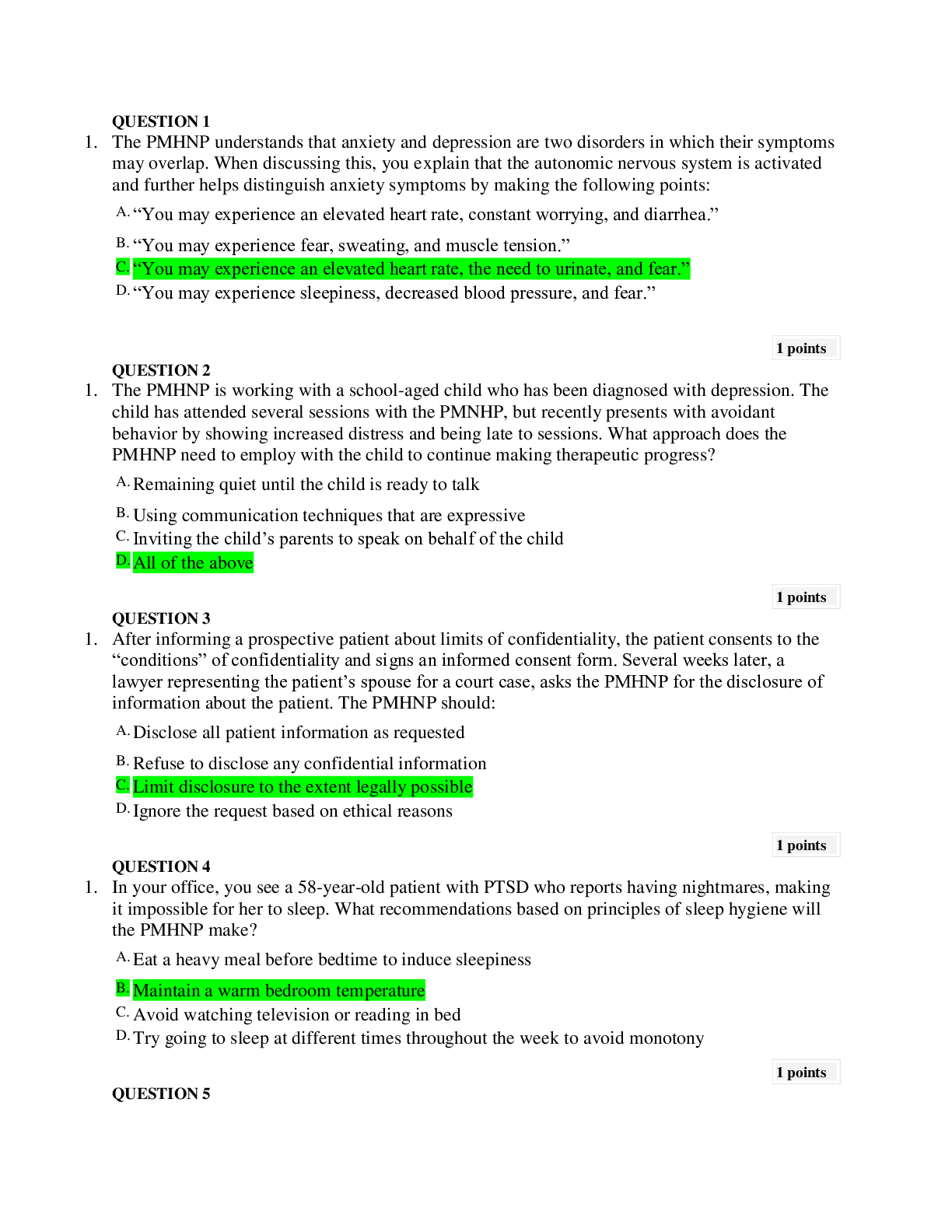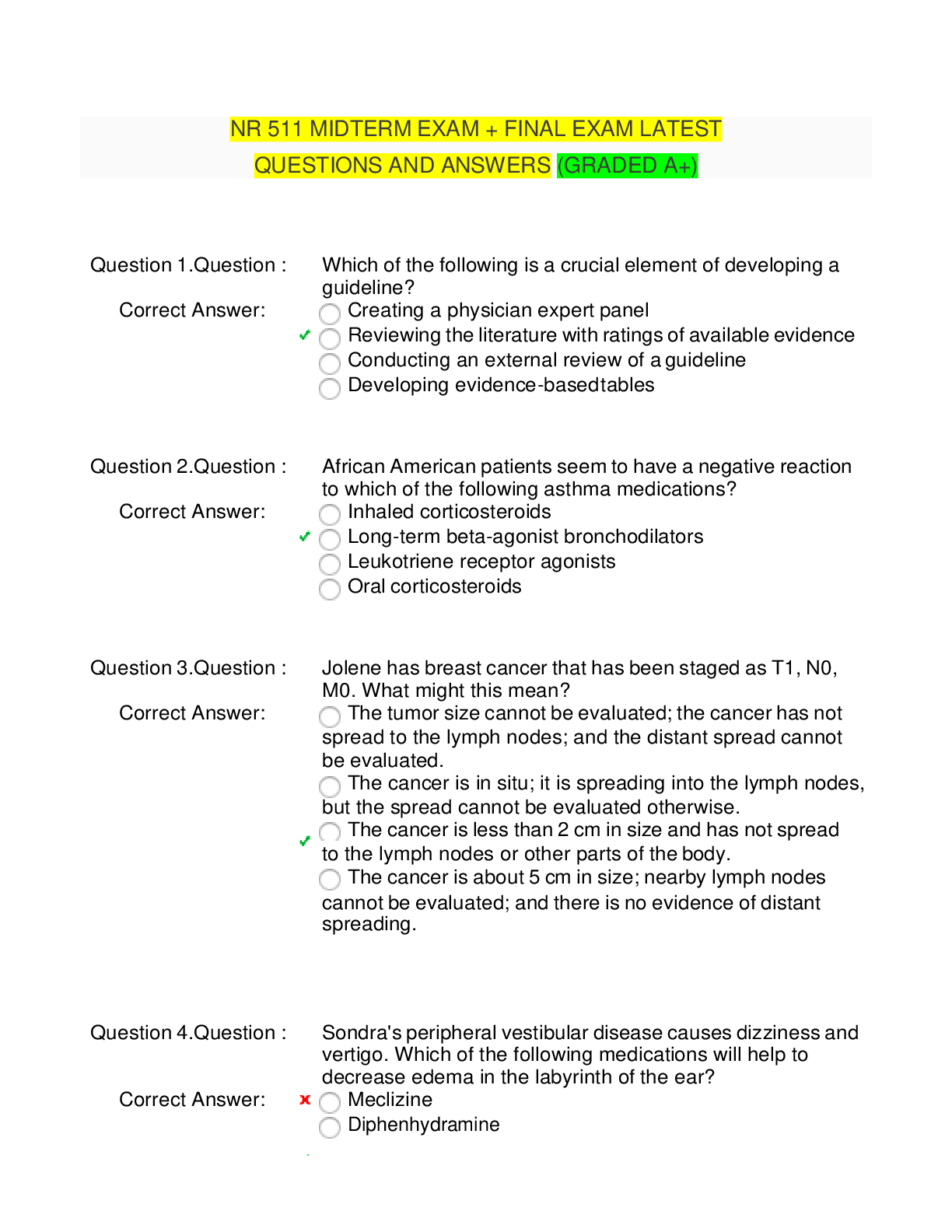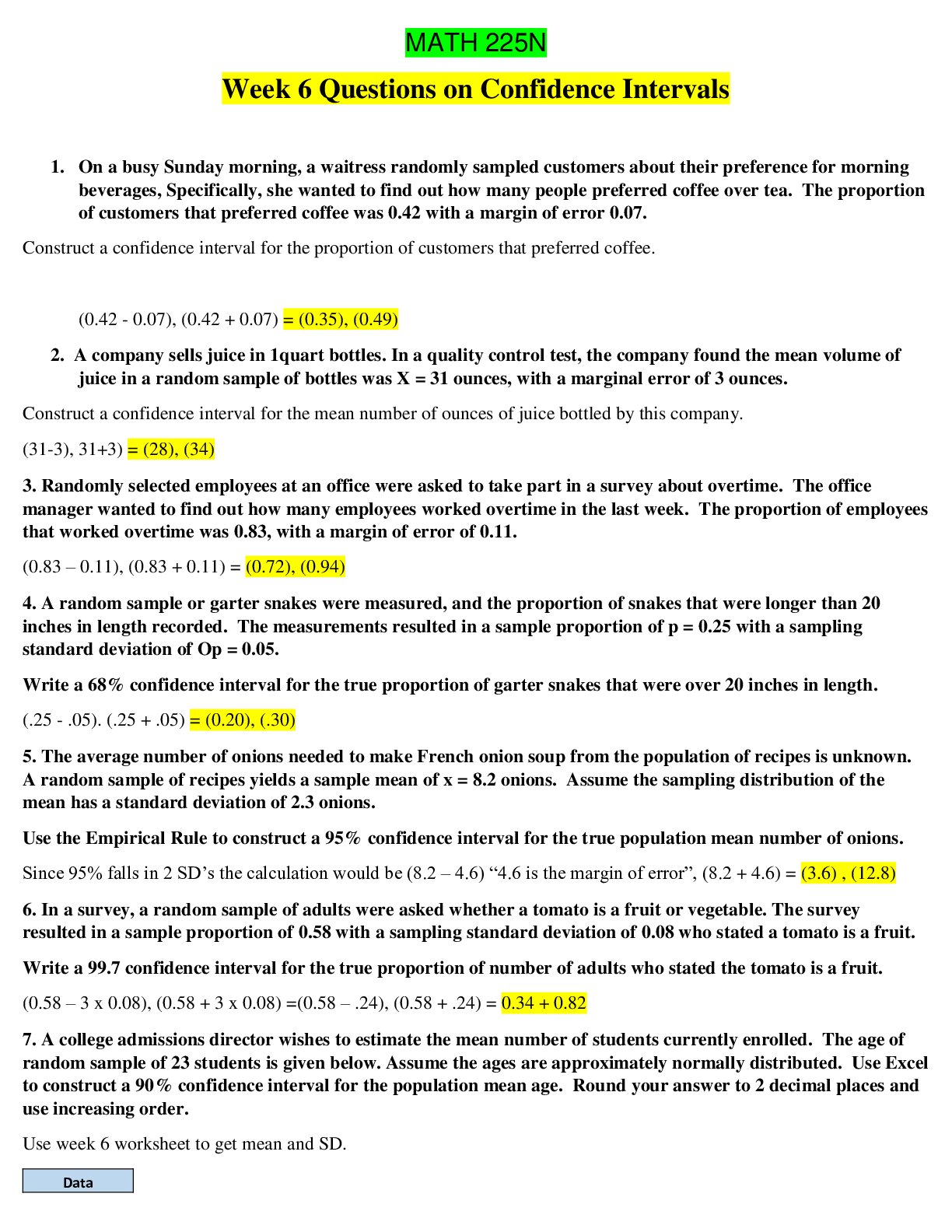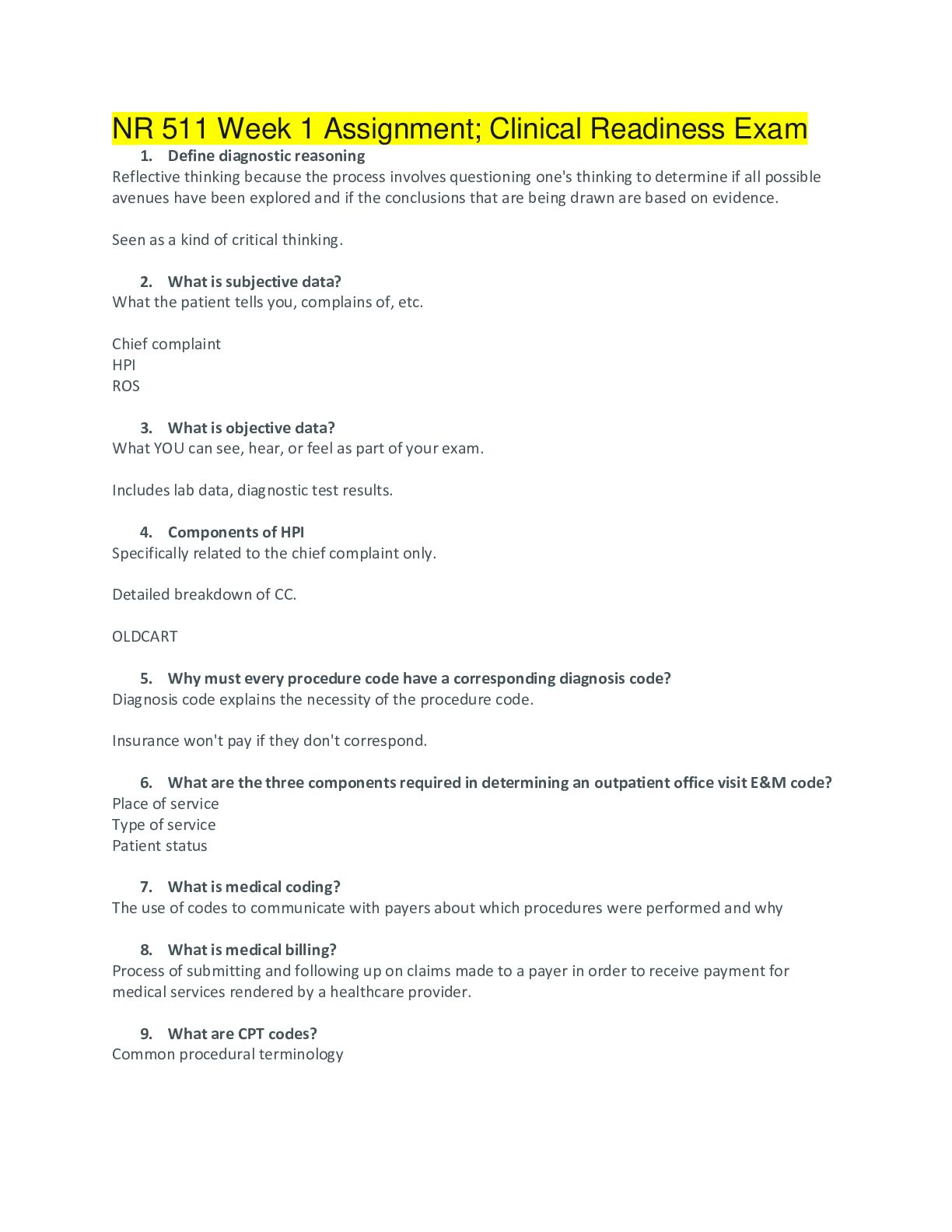Anatomy > EXAM > BIO201_MH_V3 Topic 8: Joints quiz (GRADED A) Questions and Answers | 100% verified TEST. (All)
BIO201_MH_V3 Topic 8: Joints quiz (GRADED A) Questions and Answers | 100% verified TEST.
Document Content and Description Below
Page path •BIO201_MH_V3 •Topic 8: Joints Question 1 Ellipsoid joints Select one: a. are multiaxial joints. b. are found between adjacent vertebra. c. are actually modified ball and socket jo... ints. d. allow free rotation. e. are modified pivot joints. Question 2 A dislocated shoulder involves separation of the __________ from the scapula. Select one: a. radius b. clavicle c. humerus d. manubrium e. sternum Question 3 Which of the following pairs of terms are opposites? Select one: a. plantar flexion - dorsiflexion b. abduction - extension c. inversion - retraction d. pronation - rotation e. elevation - protraction Question 4 A biaxial joint has movement Select one: a. around one axis. b. around two axes at right angles to one another. c. about several axes. d. as long as there is articular cartilage present. e. that always rotates. Question 5 A joint that consists of two opposed flat surfaces of approximately equal size is a _____ joint. Select one: a. plane b. saddle c. hinge d. pivot e. ellipsoid Question 6 The figure illustrates the joints and bones of the rib cage. What does "D" represent? Select one: a. costochondral joint b. sternum c. manubrium d. sternal symphyses e. sternocostal synchrondrosis Question 7 Joints joined together by hyaline cartilage or fibrocartilage would be classified as ______ joints. Select one: a. cartilaginous b. fibrous c. synovial d. diarthrotic Question 8 Which of the following movements is possible at the hip or coxal joint? Select one: a. rotation b. flexion c. adduction d. circumduction e. All of these are possible. Question 9 The type of movement between carpal bones is described as Select one: a. pivot. b. adduction. c. extension. d. flexion. e. gliding. Question 10 The inability to produce the fluid that keeps most joints moist indicates a disorder of the Select one: a. cruciate ligament. b. synovial membrane. c. articular cartilage. d. bursae. e. mucus membrane. Question 11 Moving the mandible to the side as when grinding the teeth is Select one: a. lateral flexion. b. lateral excursion. c. elevation. d. inversion. Question 12 Hyaluronic acid Select one: a. contributes to the rigidity of a joint. b. is found in the synovial membrane. c. is responsible for the lubricating properties of synovial fluid. d. makes up most of the matrix of hyaline cartilage. e. makes surfaces rough. Question 13 Yolanda, a yoga instructor, tells her class to stretch the muscles of the side of the trunk by instructing them to perform ___. Select one: a. opposition. b. adduction. c. lateral flexion. d. extension. e. elevation. Question 14 In 0.00 points out of 1.75 The figure illustrates a posterior view of the right knee joint. What does "B" represent? Select one: a. medial (tibial) collateral ligament (MCL) b. posterior cruciate ligament (PCL) c. anterior cruciate ligament (ACL) d. lateral (fibular) collateral ligament (LCL) e. lateral meniscus Question 15 The figure illustrates the joints and bones of the rib cage. What does "A" represent? Select one: a. costochondral joint b. sternum c. manubrium d. sternal symphyses e. sternocostal synchrondrosis Question 16 Which of the following statements concerning the ankle joint is true? Select one: a. The calcaneus articulates with the tibia to form this joint. b. Most common injuries to this joint occur because of a forceful inversion of the foot. c. A capsule of hyaline cartilage surrounds the joint. d. The lateral collateral ligament helps to stabilize this joint. e. It is a pivot joint. Question 17 The opposite of extension is Select one: a. inversion. b. protraction. c. elevation. d. pronation. e. flexion. Question 18 Which of the following statements regarding the temporomandibular (TMJ) joint is ? Select one: a. The joint is divided into lateral and medial cavities by an articular disc of cartilage. b. The joint has a cartilage capsule. c. The joint is a combination plane and ellipsoidal joint. d. The joint allows rotation. e. The joint is located between the maxilla and the mandible. Question 19 Osteoarthritis is Select one: a. a bacterial infection transmitted by ticks. b. an inflammation of any joint. c. a metabolic disorder caused by increased uric acid in blood. d. a condition that may involve an autoimmune disease. e. the most common type of arthritis. Question 20 Osteoarthritis usually is caused by Select one: a. wear and tear of the joint. b. increased uric acid in the blood. c. an autoimmune disorder. d. a bacterial infection in the joint. e. bursitis. [Show More]
Last updated: 1 year ago
Preview 1 out of 11 pages
Instant download
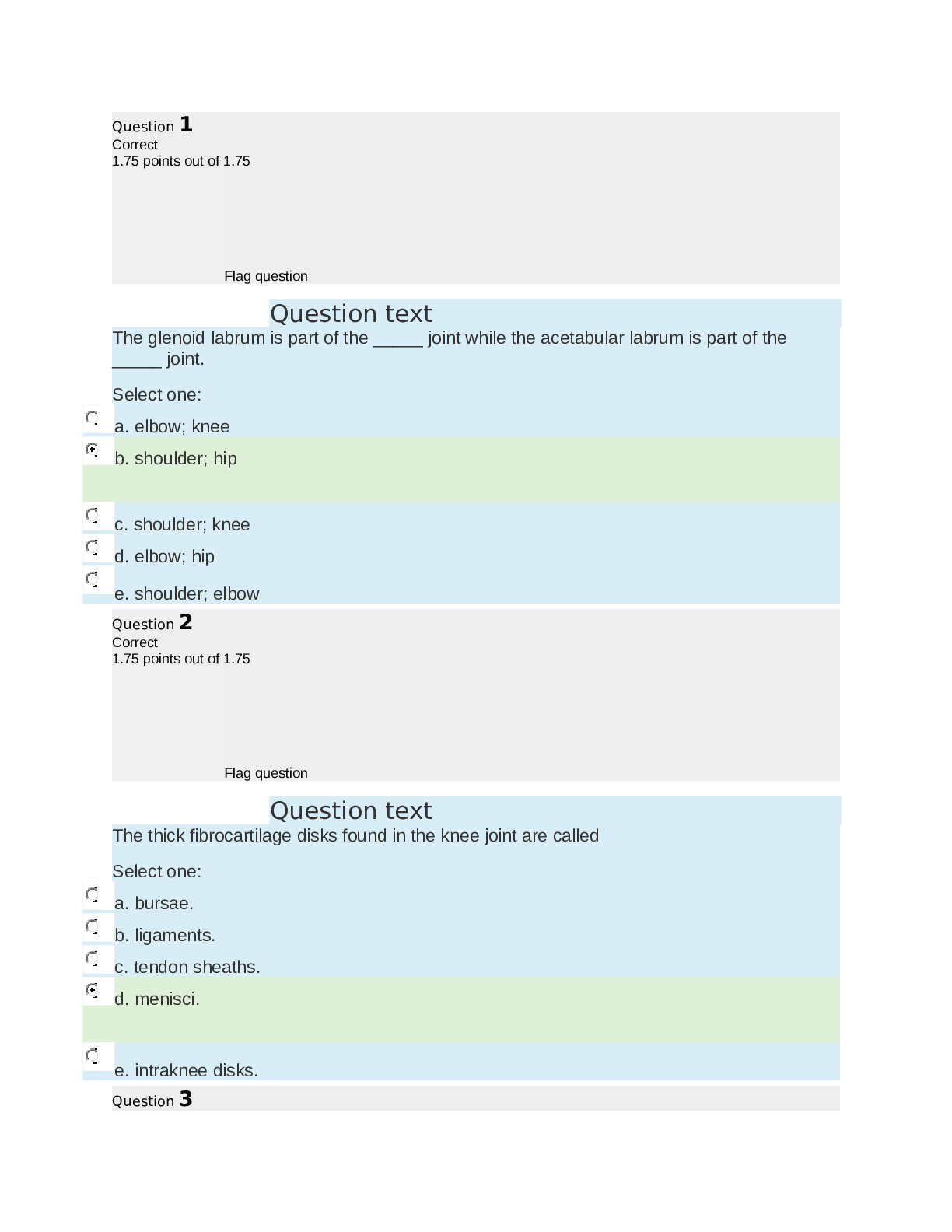
Buy this document to get the full access instantly
Instant Download Access after purchase
Add to cartInstant download
Reviews( 0 )
Document information
Connected school, study & course
About the document
Uploaded On
Sep 17, 2021
Number of pages
11
Written in
Additional information
This document has been written for:
Uploaded
Sep 17, 2021
Downloads
0
Views
68
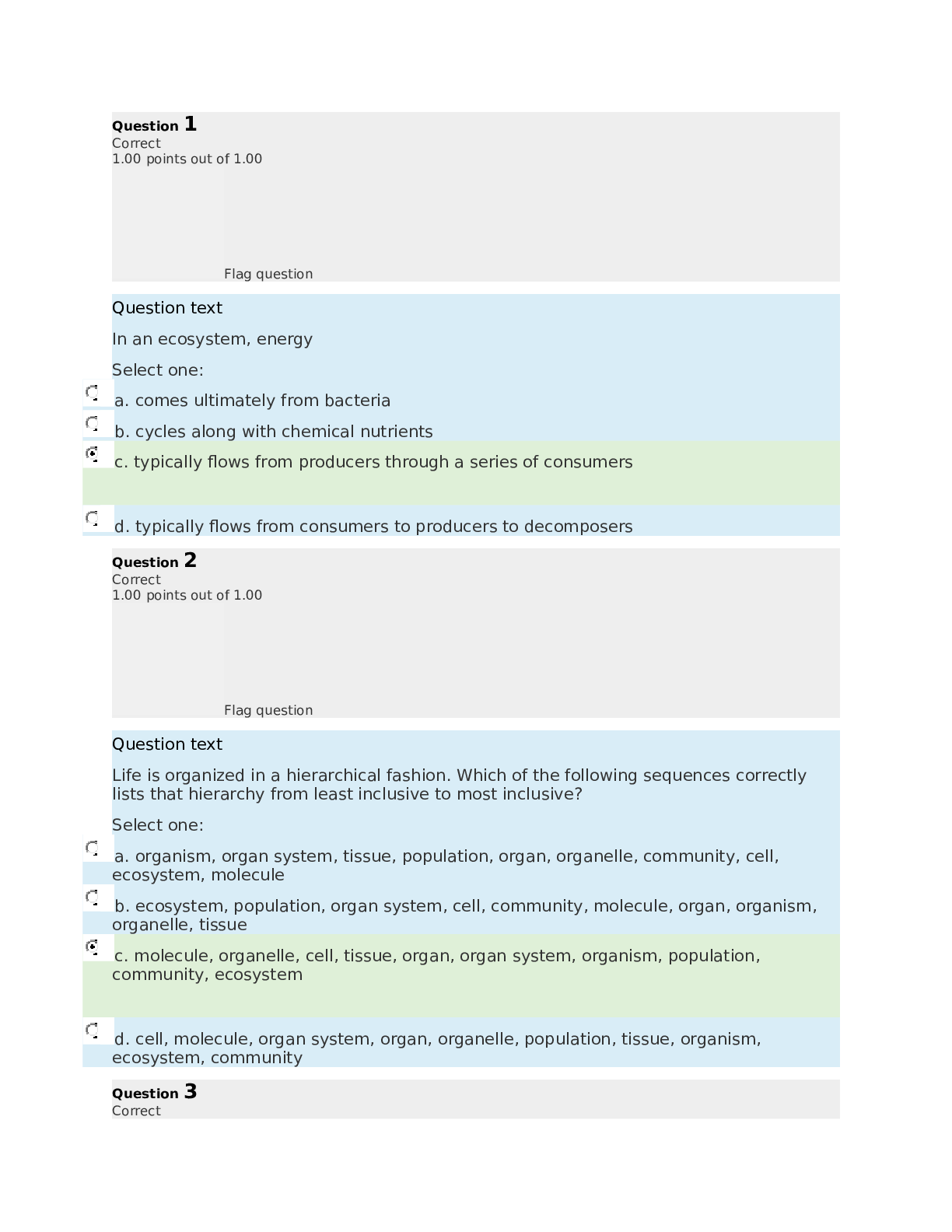






.png)







